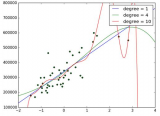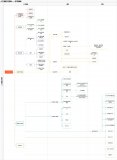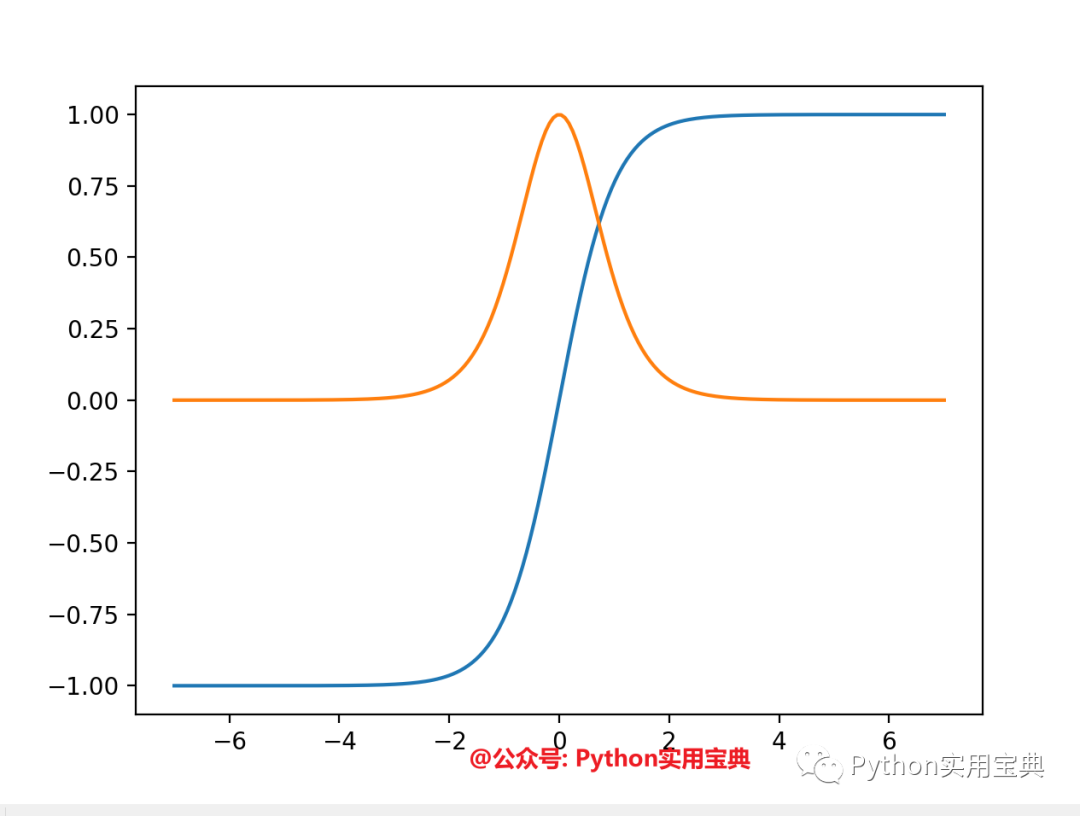現在我們要開始填充函數了。
def create_dataset(hm,variance,step=2,correlation=False):
val = 1
ys = []
for i in range(hm):
y = val + random.randrange(-variance,variance)
ys.append(y)
非常簡單,我們僅僅使用hm變量,迭代我們所選的范圍,將當前值加上一個負差值到證差值的隨機范圍。這會產生數據,但是如果我們想要的話,它沒有相關性。讓我們這樣:
def create_dataset(hm,variance,step=2,correlation=False):
val = 1
ys = []
for i in range(hm):
y = val + random.randrange(-variance,variance)
ys.append(y)
if correlation and correlation == 'pos':
val+=step
elif correlation and correlation == 'neg':
val-=step
非常棒了,現在我們定義好了 y 值。下面,讓我們創建 x,它更簡單,只是返回所有東西。
def create_dataset(hm,variance,step=2,correlation=False):
val = 1
ys = []
for i in range(hm):
y = val + random.randrange(-variance,variance)
ys.append(y)
if correlation and correlation == 'pos':
val+=step
elif correlation and correlation == 'neg':
val-=step
xs = [i for i in range(len(ys))]
return np.array(xs, dtype=np.float64),np.array(ys,dtype=np.float64)
我們準備好了。為了創建樣例數據集,我們所需的就是:
xs, ys = create_dataset(40,40,2,correlation='pos')
讓我們將之前線性回歸教程的代碼放到一起:
from statistics import mean
import numpy as np
import random
import matplotlib.pyplot as plt
from matplotlib import style
style.use('ggplot')
def create_dataset(hm,variance,step=2,correlation=False):
val = 1
ys = []
for i in range(hm):
y = val + random.randrange(-variance,variance)
ys.append(y)
if correlation and correlation == 'pos':
val+=step
elif correlation and correlation == 'neg':
val-=step
xs = [i for i in range(len(ys))]
return np.array(xs, dtype=np.float64),np.array(ys,dtype=np.float64)
def best_fit_slope_and_intercept(xs,ys):
m = (((mean(xs)*mean(ys)) - mean(xs*ys)) /
((mean(xs)*mean(xs)) - mean(xs*xs)))
b = mean(ys) - m*mean(xs)
return m, b
def coefficient_of_determination(ys_orig,ys_line):
y_mean_line = [mean(ys_orig) for y in ys_orig]
squared_error_regr = sum((ys_line - ys_orig) * (ys_line - ys_orig))
squared_error_y_mean = sum((y_mean_line - ys_orig) * (y_mean_line - ys_orig))
print(squared_error_regr)
print(squared_error_y_mean)
r_squared = 1 - (squared_error_regr/squared_error_y_mean)
return r_squared
xs, ys = create_dataset(40,40,2,correlation='pos')
m, b = best_fit_slope_and_intercept(xs,ys)
regression_line = [(m*x)+b for x in xs]
r_squared = coefficient_of_determination(ys,regression_line)
print(r_squared)
plt.scatter(xs,ys,color='#003F72', label = 'data')
plt.plot(xs, regression_line, label = 'regression line')
plt.legend(loc=4)
plt.show()
執行代碼,你會看到:

?
判定系數是 0.516508576011(要注意你的結果不會相同,因為我們使用了隨機數范圍)。
不錯,所以我們的假設是,如果我們生成一個更加緊密相關的數據集,我們的 R 平方或判定系數應該更好。如何實現它呢?很簡單,把范圍調低。
xs, ys = create_dataset(40,10,2,correlation='pos')
?

?
現在我們的 R 平方值為 0.939865240568,非常不錯,就像預期一樣。讓我們測試負相關:

xs, ys = create_dataset(40,10,2,correlation='neg')
?
R 平方值是 0.930242442156,跟之前一樣好,由于它們參數相同,只是方向不同。
這里,我們的假設證實了:變化越小 R 值和判定系數越高,變化越大 R 值越低。如果是不相關呢?應該很低,接近于 0,除非我們的隨機數排列實際上有相關性。讓我們測試:
xs, ys = create_dataset(40,10,2,correlation=False)

?
判定系數為 0.0152650900427。
現在為止,我覺得我們應該感到自信,因為事情都符合我們的預期。
既然我們已經對簡單的線性回歸很熟悉了,下個教程中我們開始講解分類。
 電子發燒友App
電子發燒友App


































評論